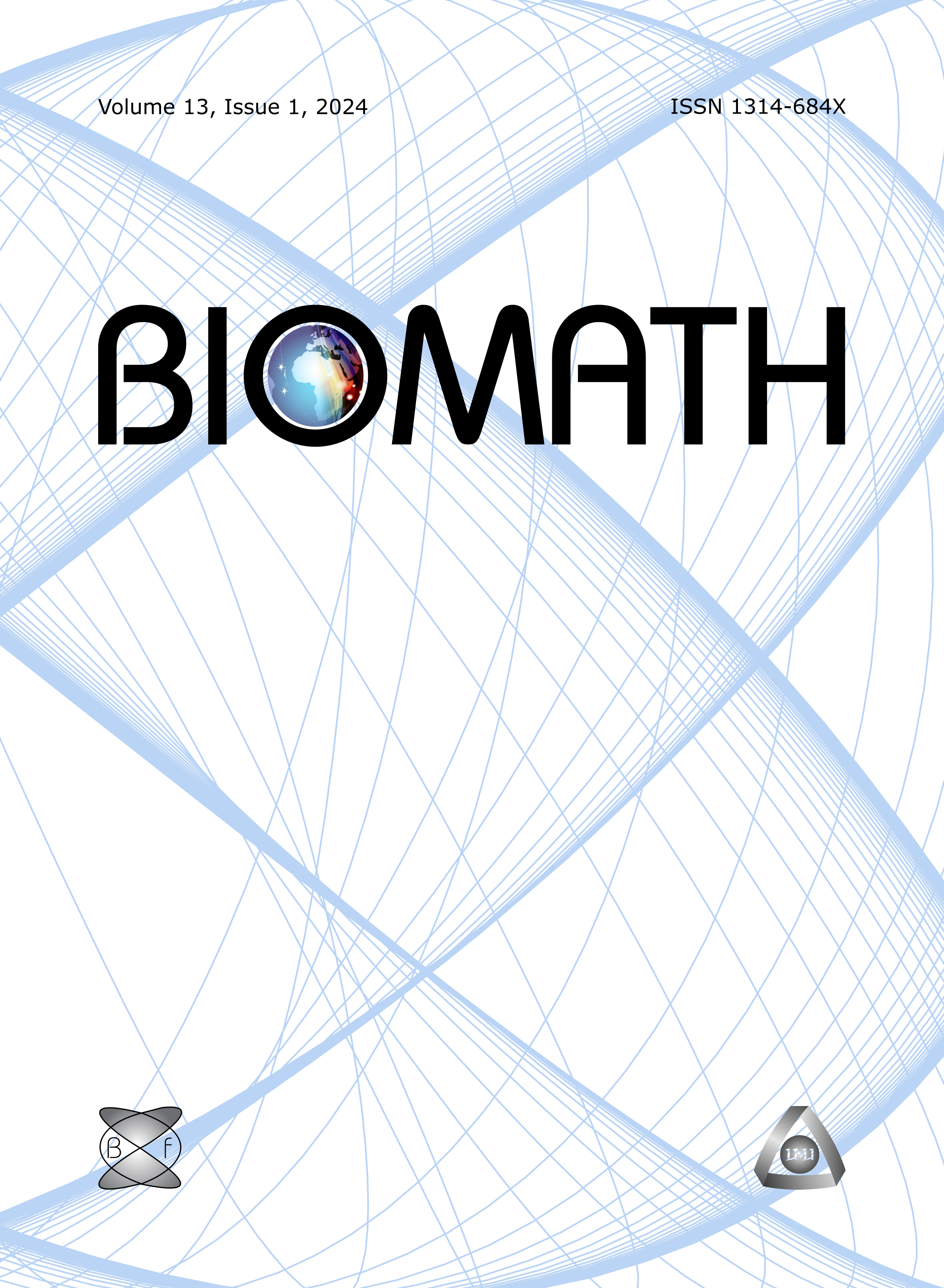Dynamical analysis combined with parameter identification for a model of infection in honeybee colonies with social immunity
DOI:
https://doi.org/10.55630/j.biomath.2023.12.166Keywords:
honeybee population dynamics, social immunity, least-squares fittingAbstract
Several models on honeybee population dynamics have been considered in the past decades, which explain that the growth of bee
colonies is highly dependent on the availability of food and social inhibition. The phenomenon of the Colony Collapse Disorder (CCD) and its exact causes remain unclear and here we are interested on the factor of social immunity.
We work with the mathematical model in [1]. The core model, consisting of four nonlinear ordinary differential equations with unknown functions: brood and nurses B, iB, N and iN represent the number of healthy brood, infected brood, healthy nurses, and infected nurses, respectively.
First, this model implements social segregation. High-risk individuals such as foragers are limited to contact only nectar-receivers, but not other vulnerable individuals (nurses and brood) inside the nest. Secondly, it includes the hygienic behavior, by which healthy nurses actively remove infected workers and brood from the colony.
We aim to study the dynamics and the long-term behavior of the proposed model, as well as to discuss the effects of crucial parameters associated with the model. In the first stage, we study the model equilibria stability in dependence of the reproduction number.
In the second stage, we investigate the inverse problem of parameters identification in the model based on finite number time measurements of the population size. The conjugate gradient method with explicit Frechet derivative of the cost functional is proposed for the numerical solution of the inverse problem.
Computational results with synthetic and realistic data are performed and discussed.
Downloads
Published
Issue
Section
License
Copyright (c) 2024 Atanas Atanasov, Slavi Georgiev, Lubin Vulkov

This work is licensed under a Creative Commons Attribution 4.0 International License.
The journal Biomath is an open access journal. All published articles are immeditely available online and the respective DOI link activated. All articles can be access for free and no reader registration of any sort is required. No fees are charged to authors for article submission or processing. Online publications are funded through volunteer work, donations and grants.
Authors who publish with this journal agree to the following terms:
- Authors retain copyright and grant the journal right of first publication with the work simultaneously licensed under a Creative Commons Attribution License 4.0 that allows others to share the work with an acknowledgement of the work's authorship and initial publication in this journal.
- Authors are able to enter into separate, additional contractual arrangements for the non-exclusive distribution of the journal's published version of the work (e.g., post it to an institutional repository or publish it in a book), with an acknowledgement of its initial publication in this journal.
- Authors are permitted and encouraged to post their work online (e.g., in institutional repositories or on their website) prior to and during the submission process, as it can lead to productive exchanges, as well as earlier and greater citation of published work (See The Effect of Open Access).

